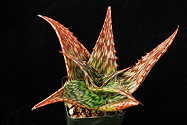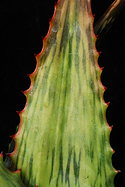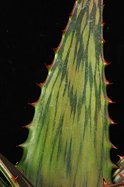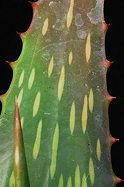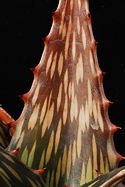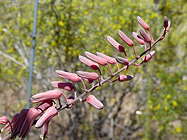Djibouti (silent d) is a little-known home of succulent plants. However, its position between succulent-rich Somalia, Ethiopia, and Eritrea, and just across the Strait of Bab-el-Mandeb from Yemen, makes their occurrence here logical. Most of the succulents represented also range into the surrounding countries, as does Aloe djiboutiensis. It ranges into adjacent Eritrea on geologically similar, basaltic terrain but is most commonly found on ridges and plateaus in Djibouti. It is related to Aloe somaliensis but is distinguished by its smaller size, horizontally produced inflorescences, and shorter flowers. These are secund by virtue of the bending of the pedicels upward, resulting in the flowers being predominantly in that orientation. Djibouti’s reputation as one of the hottest places on Earth, coupled with the occurrence of this species on dark, basaltic rock, indicates its significant heat tolerance. However, its frost tolerance is in question as winter minima in habitat are rarely below 70° F. The flowers are dusky pink with small, white spots that are actually gas bubbles beneath the epidermis. Perhaps these play a role in cooling these flowers in this hot climate? Seedlings of HBG 138957 from Anthon Ellert, grown from plants produced from seed collected by Giuseppe Orlando (#GO222504) November 2002, near Day village in the Goda mountains, Tadjoura Region, Djibouti. $10
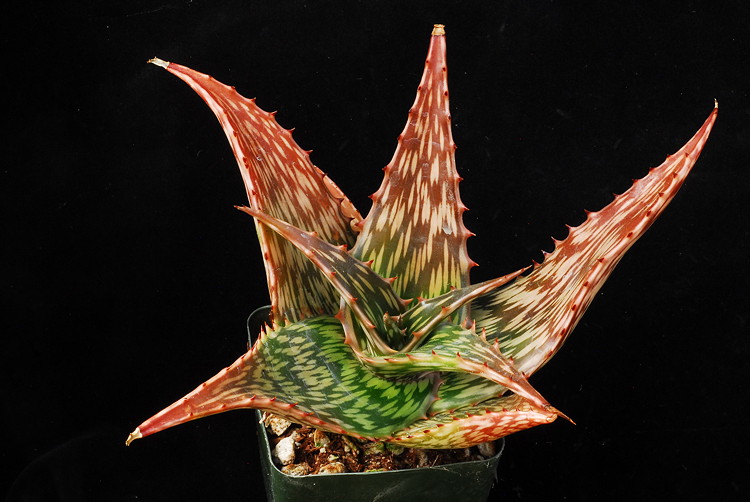
Published in the Cactus and Succulent Journal, Vol. 93 (2), Summer 2021
